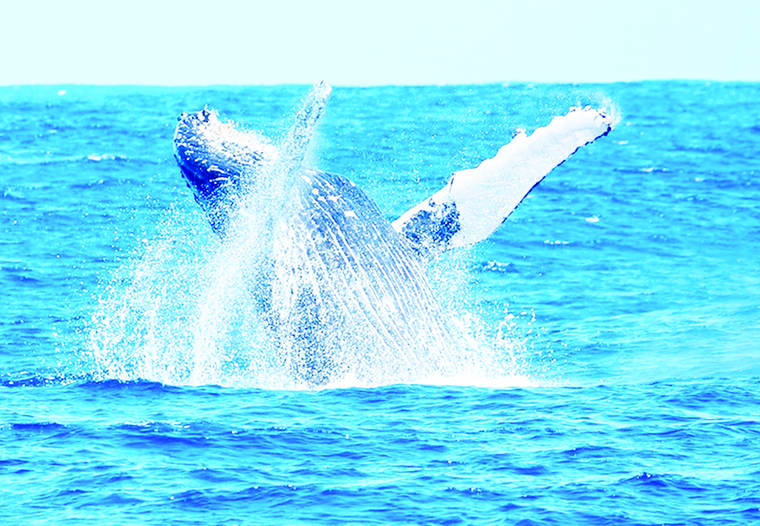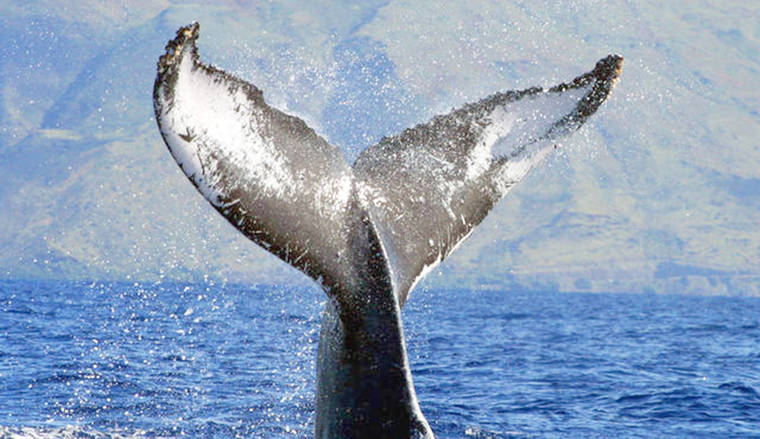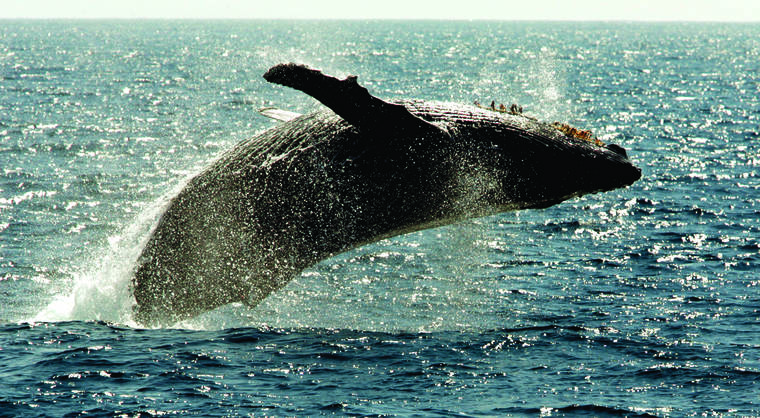LIHUE — Hawaiian humpback whale activity is changing, according to data from the National Oceanic and Atmospheric Administration, including where the whales choose to eat and breed.
Indications show whales could be spending more time feeding in British Columbia and closer to shore in Alaska, and also spending more time in the Northwest Hawaiian Islands for breeding instead of wintering in the main Hawaiian Islands.
“It’s been four years, we’ve been getting more (gear entanglements) from British Columbia because of changes in feeding grounds,” said Ed Lyman, Hawaiian Islands Humpback Whale National Marine Sanctuary principal investigator, during a Tuesday update with the advisory council.
The change started around 2015, when a marine heat wave nicknamed “The Blob” moved through the Pacific. It affected much of the sea life, including krill and other parts of the humpback whale diet.
NOAA is predicting the potential for another such event in the next four months.
The Sanctuary Advisory Council is comprised of representatives from the islands, as well as cultural and natural resources experts who help guide management of the sanctuary.
Whale count numbers have been declining for a few years, with data showing about a 50% decrease in whales counted between 2015 and 2018.
However, numbers from the 2018 season’s whale count in the Main Hawaiian Islands did provide a bit of good news.
“More whales were seen here (in this recent season),” Lyman said. “It’s reflected in acoustic data and shows an improvement over the past two years.”
Another piece of good news is that while there’s been an overall decrease in whale sightings in the Main Hawaiian Islands, researchers and experts recently found an abundance of whales within the Northwest Hawaiian Islands.
That resulted from a research cruise during the U.S. federal government shutdown that stretched from Dec. 22 through Jan. 25.
“There were more whales in the monument (Papahanaumokuakea Marine National Monument) than expected, could mean they’re migrating up there for breeding,” said Mark Ferrari, principal investigator for the Center for Whale Studies.
Ferrari and Lyman work in tandem with other researchers to study the patterns and numbers of the Hawaii humpback whales.
They say there are still many questions to be answered about the whales in Papahanaumokuakea, including whether they’re a sub-population of the larger breeding population, or if they’re the same whales migrating from the Main Hawaiian Islands further north.
Tuesday’s meeting also touched on the proposed Kauai discovery center, set to open in Kukui Grove Shopping Center in January 2020.
The 1,600-square-foot facility will be the new office for Jean Souza, Kauai programs coordinator for the Office of National Marine Sanctuaries, and her team. It’ll also be home to interpretative displays and have access to all the common areas at Kukui Grove.
Those working on the project are teaming up with local practitioners and experts, gaining feedback on what kinds of things will be available at the facility.
Maka‘ala Ka‘aumoana, Kauai resident who sits on the Sanctuary Council and is involved in planning the Kauai facility, said she’s already seeing the uniqueness of the community shining through the project.
“(We’re) making this a Kauai story about the bigger world around Kauai itself,” Ka‘aumoana said. “We want to be able to reflect what our community is asking us for.”
•••
Jessica Else, environment reporter, can be reached at 245-0452 or at jelse@thegardenisland.com





